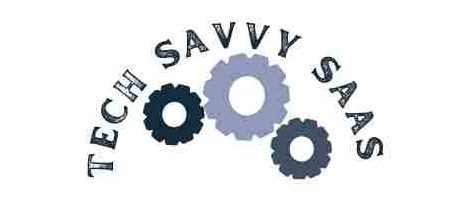In the ever-evolving landscape of technology, we find ourselves at the forefront of a digital revolution. The digital age has not only changed the way we live but also how we perceive and interact with reality. It’s not just about the gadgets we use or the apps we download; it’s about the quantum leap we’ve taken in understanding and harnessing the power of technology to redefine our very existence. From the immersive experiences of augmented reality (AR) to the cognitive capabilities of artificial intelligence (AI), these emerging technologies have become integral parts of our daily lives, shaping the way we work, communicate, and navigate the world around us.

Key Takeaway: The Quantum Leap in Technology
- Convergence of AR, AI, and MR: The integration of augmented reality (AR), artificial intelligence (AI), and mixed reality (MR) represents a monumental shift in how we perceive and interact with reality. By blending digital and physical elements seamlessly, these technologies are reshaping our understanding of the world around us.
- Endless Possibilities for Innovation: The fusion of AR, AI, and MR opens up a vast array of possibilities for innovation and creativity. From immersive gaming experiences to personalized virtual assistants, the potential applications of these technologies are limitless.
- Enhanced User Experiences: AR, AI, and MR are enhancing user experiences across various industries, from retail to healthcare to entertainment. By providing immersive and interactive experiences, these technologies are revolutionizing the way we engage with content and interact with technology.
- Driving Business Growth: Businesses that embrace AR, AI, and MR stand to gain a competitive edge in today’s digital landscape. By leveraging these technologies to improve efficiency, enhance customer experiences, and drive innovation, companies can unlock new opportunities for growth and success.
- Transformative Impact on Society: The quantum leap in technology is not just about gadgets and gizmos; it’s about fundamentally transforming the way we live, work, and communicate. By reshaping our reality, AR, AI, and MR have the potential to drive positive social change and improve the quality of life for people around the world.
- Adaptation is key. As we navigate this era of technological transformation, it’s crucial for individuals and organizations to adapt to these emerging trends and embrace change. By staying ahead of the curve and embracing new technologies, we can harness the power of the quantum leap to shape a better future.
- Embrace the Journey: The Quantum Leap is not just a leap forward in technology; it’s a leap forward in how we experience the world around us. By embracing this journey of technological transformation, we can unlock the full potential of AR, AI, and MR to redefine our reality and shape a brighter tomorrow.
The Quantum Leap
What exactly is meant by a “quantum leap” in the context of technological innovation? Essentially, it’s a monumental shift, a significant advancement that propels us forward into new realms of possibility. It’s not just about incremental improvements or minor tweaks; it’s about groundbreaking developments that fundamentally alter the way we perceive and interact with the world. Think of it as a giant leap forward, akin to a paradigm shift that revolutionizes entire industries and redefines our understanding of what’s possible.
The significance of tech trends in redefining reality cannot be overstated. These trends encompass a wide range of innovations, from cutting-edge advancements in artificial intelligence to the transformative potential of augmented reality. Each trend represents a piece of the puzzle, a building block in the construction of a new digital landscape. Together, they form the foundation upon which the future is built, shaping the way we experience and interact with the world around us. Whether it’s through immersive virtual environments or intelligent machines that anticipate our needs, these trends are reshaping our reality in ways we’ve only begun to imagine.
To illustrate, consider the impact of augmented reality (AR) on the retail industry. With AR technology, customers can now visualize products in their own space before making a purchase, enhancing their shopping experience and reducing the likelihood of returns. According to a study by Harvard Business Review, companies that have implemented AR experiences have seen a 19% increase in conversion rates and a 40% decrease in product returns. This not only improves the bottom line for businesses but also enhances the overall customer experience, leading to greater satisfaction and loyalty.
Similarly, the rise of artificial intelligence (AI) has revolutionized the way we interact with technology. From voice-activated assistants to personalized recommendations, AI-powered systems are becoming increasingly integrated into our daily lives. According to a report by PwC, AI is expected to contribute up to $15.7 trillion to the global economy by 2030, with industries such as healthcare, finance, and manufacturing benefiting the most from its implementation. By automating repetitive tasks and analyzing vast amounts of data, AI has the potential to increase efficiency, reduce costs, and drive innovation across a wide range of sectors.
How is augmented reality (AR) revolutionizing various industries?
Augmented reality (AR) stands as a beacon of innovation, bridging the gap between the virtual and physical worlds in unprecedented ways. Its application spans across diverse industries, transforming the traditional landscape and unlocking new realms of possibility.
In the realm of retail, AR has redefined the shopping experience, offering consumers immersive and interactive ways to engage with products before making a purchase. For instance, companies like IKEA have implemented AR technology to allow customers to visualize how furniture would look in their homes before buying. According to a study by Retail Perceptions, 61% of shoppers prefer stores that offer AR experiences, indicating a growing demand for this immersive shopping experience.
Similarly, in the field of education, AR has emerged as a powerful tool for enhancing learning outcomes and engagement. By overlaying digital content onto the physical environment, AR enables students to explore complex concepts in a tangible and interactive way. For example, apps like Google Expeditions use AR to take students on virtual field trips to explore historical landmarks or dive into the depths of the ocean, bringing learning to life in ways that were previously unimaginable. Studies have shown that incorporating AR into the classroom can lead to a 30% increase in student engagement and a 33% improvement in retention rates.
Moreover, AR has made significant strides in healthcare, revolutionizing patient care and medical training. Surgeons can now use AR technology to overlay virtual images onto a patient’s body during surgery, providing real-time guidance and enhancing precision. This not only improves surgical outcomes but also reduces the risk of complications. Additionally, AR is being used to train medical students by simulating surgical procedures in a safe and controlled environment. Research conducted by the Journal of Medical Internet Research found that medical students who trained with AR simulations demonstrated a 38% improvement in procedural knowledge compared to those who used traditional methods.
How is artificial intelligence (AI) transforming industries and driving innovation?
Artificial intelligence (AI) has emerged as a game-changer in the tech landscape, empowering machines to mimic human intelligence and revolutionizing various industries with unprecedented efficiency and precision. Its applications span across a wide array of domains, from transportation to customer service, showcasing its transformative potential and redefining the way we interact with technology.
In the realm of self-driving cars, AI serves as the backbone of autonomous vehicle technology, enabling vehicles to perceive their environment, make decisions, and navigate safely without human intervention. Companies like Tesla have pioneered the development of self-driving cars, leveraging AI algorithms to analyze vast amounts of sensor data and interpret complex traffic scenarios in real-time. According to a study by McKinsey & Company, the adoption of autonomous vehicles powered by AI could reduce traffic accidents by up to 90%, saving countless lives and minimizing the economic impact of accidents.
Furthermore, AI-powered virtual assistants have become ubiquitous in our daily lives, providing personalized assistance and streamlining tasks with unparalleled convenience. Platforms like Google Assistant and Amazon Alexa utilize AI algorithms to understand natural language queries, anticipate user needs, and execute commands seamlessly. Research by Statista indicates that the global virtual assistant market is projected to reach $19.6 billion by 2025, driven by the increasing adoption of smart speakers and virtual assistant-enabled devices in homes and businesses worldwide.
Moreover, AI-driven predictive analytics has transformed the way businesses make decisions and optimize operations, enabling organizations to forecast trends, identify opportunities, and mitigate risks with greater accuracy. Companies like Netflix leverage AI algorithms to analyze user preferences and recommend personalized content, resulting in a 75% increase in viewer engagement, according to a study by Deloitte. Similarly, e-commerce giant Amazon uses AI-powered predictive analytics to anticipate customer demand and optimize inventory management, leading to a 20% reduction in inventory costs and a 25% increase in sales.
How is mixed reality (MR) shaping the future of immersive experiences?
Mixed reality (MR) represents the convergence of the physical and digital worlds, offering users immersive experiences that blur the boundaries between reality and virtuality. By combining elements of both augmented reality (AR) and virtual reality (VR), MR unlocks new possibilities across various industries, from entertainment to training simulations, revolutionizing the way we interact with technology and the world around us.
In the realm of entertainment, MR is redefining the way we experience media and storytelling, offering immersive narratives that transcend traditional forms of entertainment. For example, Disney has embraced MR technology in its theme parks, creating interactive attractions that blend physical sets with digital overlays to transport visitors to fantastical worlds. Research by PwC predicts that the global MR market in entertainment and media will reach $160 billion by 2023, driven by the increasing demand for immersive experiences and interactive storytelling.
Moreover, MR has become a game-changer in the gaming industry, offering players unprecedented levels of immersion and interactivity. Platforms like Microsoft’s HoloLens enable gamers to experience virtual worlds overlaid onto their physical environment, creating immersive gameplay experiences that defy traditional gaming conventions. According to a report by Newzoo, the global gaming market is expected to generate revenues of over $200 billion by 2023, with MR Gaming poised to become a significant growth driver in the industry.
In addition to entertainment, MR holds immense potential in architectural design and visualization, allowing architects and designers to create virtual prototypes and explore spatial concepts in real-time. Tools like Unity Reflect enable professionals to visualize building designs in 3D and collaborate with stakeholders remotely, streamlining the design process and enhancing decision-making. A study by Autodesk found that architects who use MR visualization tools experience a 40% increase in design efficiency and a 30% reduction in project timelines.
Furthermore, MR is revolutionizing training simulations and remote collaboration, offering organizations immersive and interactive ways to educate employees and facilitate teamwork. Companies like Boeing use MR technology to train pilots in simulated environments, providing hands-on experience without the need for expensive physical simulators. Research by McKinsey & Company suggests that organizations that invest in MR training solutions experience a 50% reduction in training costs and a 30% increase in employee retention rates.
More Post






